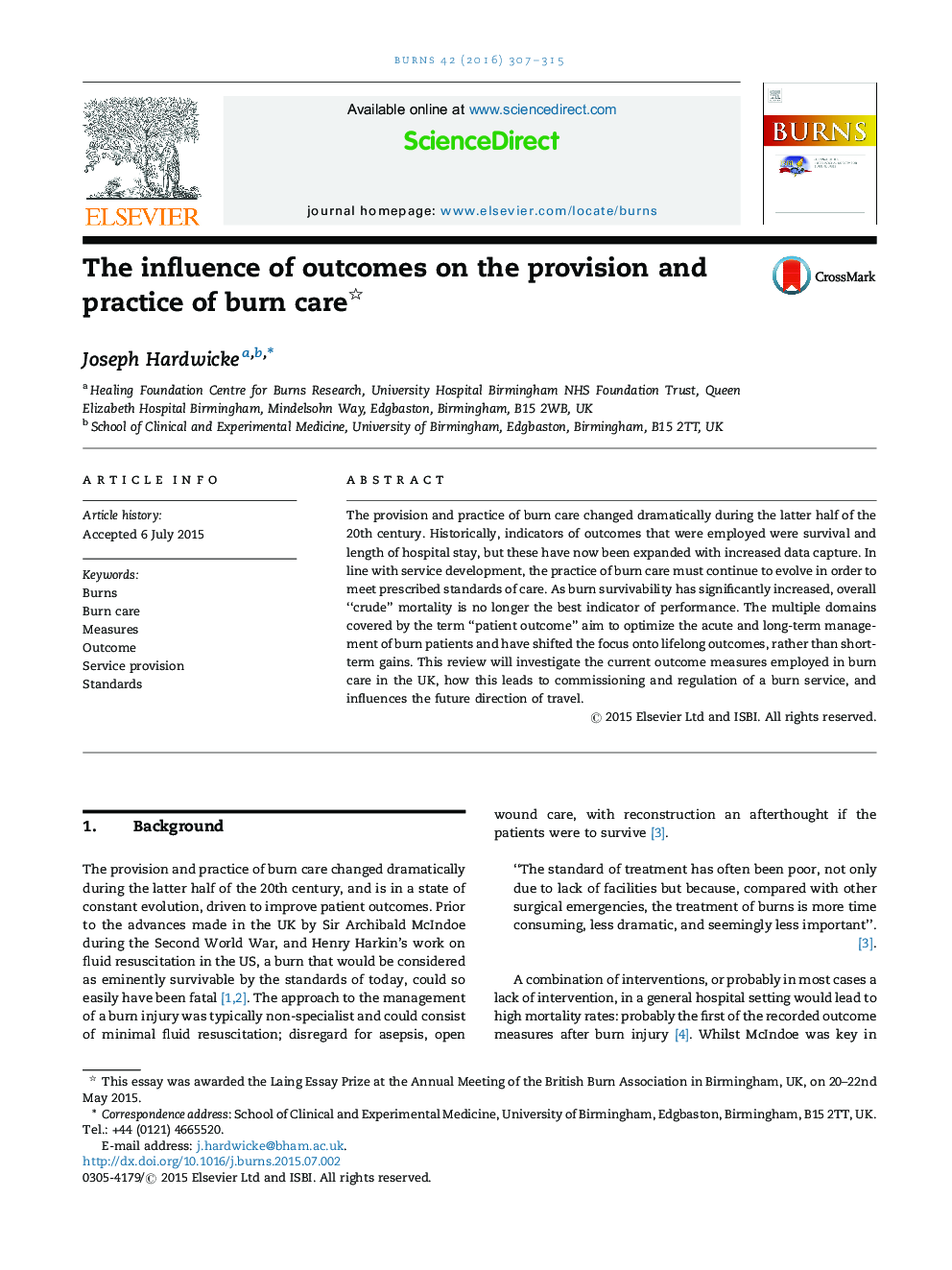| Article ID | Journal | Published Year | Pages | File Type |
|---|---|---|---|---|
| 3104036 | Burns | 2016 | 9 Pages |
•Measures of outcome after burn injury have greatly expanded over the last 50 years.•As burn survival improves, mortality is no longer the best indicator of performance.•This article will investigate outcome measures employed in burn care in the UK.•Burn services are commissioned and regulated based upon outcome measures.•The focus has moved onto lifelong outcomes, rather than short-term gains.
The provision and practice of burn care changed dramatically during the latter half of the 20th century. Historically, indicators of outcomes that were employed were survival and length of hospital stay, but these have now been expanded with increased data capture. In line with service development, the practice of burn care must continue to evolve in order to meet prescribed standards of care. As burn survivability has significantly increased, overall “crude” mortality is no longer the best indicator of performance. The multiple domains covered by the term “patient outcome” aim to optimize the acute and long-term management of burn patients and have shifted the focus onto lifelong outcomes, rather than short-term gains. This review will investigate the current outcome measures employed in burn care in the UK, how this leads to commissioning and regulation of a burn service, and influences the future direction of travel.
